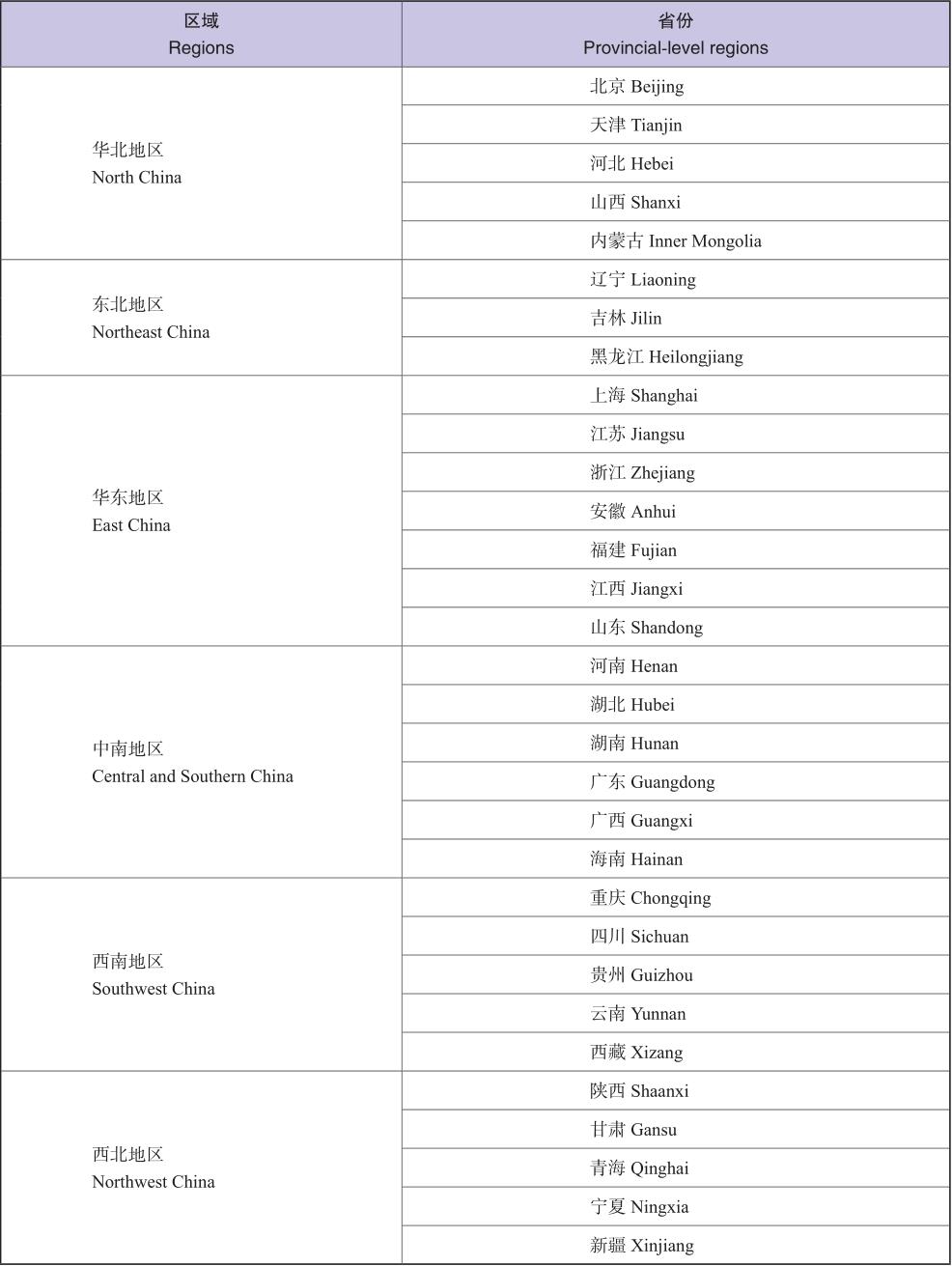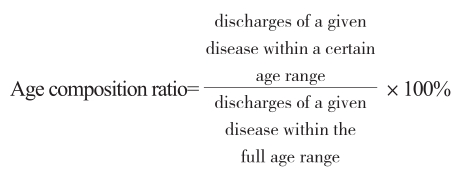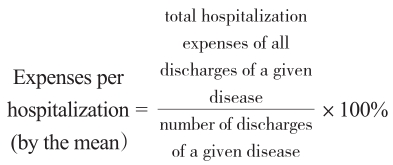




本年报的统计指标主要包括出院人次、疾病构成比、年龄别构成比、次均住院费用、平均住院日。
某一时期内某疾病的出院病例报告的总次数。
人次。
从入院到出院记为1次,同一患儿多次入出院记为多次。本省就医出院人次指户籍地为某省份的肿瘤患儿在该省份诊疗机构就医的出院人次。省外就医出院人次指户籍地为某省份的肿瘤患儿到该省份外的其他省份就医的出院人次。
表4-1-2 地区分类表

Table 4-1-2 Classification of regions
某一时期内某疾病出院人次占全部疾病出院人次的比例。

百分比。
疾病范围:恶性肿瘤、中枢神经系统良性肿瘤。
某一时期内某疾病在某年龄段的出院人次占该疾病全部年龄段出院人次的比例。

百分比。
全部年龄段范围:0~19周岁。
某一时期内某疾病的每一出院人次的平均住院费用。本报告按均数及中位数分别计算。

次均住院费用(中位数):将某疾病每一出院人次住院费用的金额由小到大排序后取居于中间位置的值(如果样本数是偶数则取两个中间值的平均)。
元。
【定义】 某一时期某疾病的每一出院人次的平均住院时间,本报告按均数及中位数分别计算。

平均住院日(中位数):将某疾病每一出院人次占用床的天数由小到大排序后取居于中间位置的值(如果样本数是偶数则取两个中间值的平均)。
天。
入出院为同一天,住院天数按1天计。
This annual report only includes report cards for cancers and benign tumors of the central nervous system. Referring to the commonly used International Cancer Classification Method (ICD-10), children’s cancers and benign tumors of the central nervous system are classified into 26 categories according to the first three“C”digits of the ICD-10 code. Among them, myelodysplastic syndromes (D46) and other neoplasms of uncertain or unknown behaviour of lymphoid, haematopoietic and related tissue (D47) are classified as leukemia (C91-95) (Table 4-1-1).
There are 34 provincial-level administrative regions (provincial-level regions in short) in China, including 23 provinces, five autonomous regions, four municipalities directly under the central government, and two special administrative regions. In this annual report, the provincial-level regions of surveillance sites do not include Hong Kong, China, Macao, China and Taiwan Province, China. According to the 13th Five-year Plan of National Medical Centers and National Regional Medical Centers issued by the Former National Health and Family Planning Commission, the annual report is classified by six regions according to their coverage of area and population distribution, including North China, Northeast China, East China, Central and Southern China, Southwest China and Northwest China (Table 4-1-2).
The indicators of annual report mainly includes the number of discharges, disease composition ratio, age composition ratio, expenses per hospitalization, and average length of hospitalization.
Definition: The number of cases of a given disease reported to be discharged from hospital during a given period.
Unit: Discharge.
Note: One discharge is counted when a patient is admitted by and then discharged from hospital. Multiple discharges of the same patient will be counted as multiple. The number of discharges from a hospital in the provincial-level region refers to the number of children with cancer in a provincial-level region who have been admitted to and later discharged from medical institutions in the said provincial-level region. The number of discharges from a hospital out of the provincial-level region refers to the number of children with cancer in a provincial-level region who have been admitted to and later discharged from medical institutions out of said provincial-level region.
Definition: The proportion of discharges of a given disease to all diseases during a given period.

Unit: Percentage.
Note: The scope of disease includes cancers, and benign tumors of the central nervous system.
Definition: The proportion of discharges of a given disease within a certain age range to discharges of the full age range of said disease during a given period.

Unit: Percentage.
Note: The full age range is 0-19 years old.
Definition: The average hospitalization expenses of discharges of a given disease during a given period, calculated in this report by both the mean and the median.

Expenses per hospitalization (by the median): the middle number when all the hospitalization expenses of children of a given disease are placed in value order (If there is an even set of samples, the median is determined by adding the middle two numbers and dividing them by two).
Unit: CNY.
Definition: The average length of hospitalization of discharges of a given disease during a given period, calculated by both the mean and median.

Average length of hospitalization (by the median): the middle number when all the numbers of bed days of discharges of a given disease are placed in value order (If there is an even set of samples, the median is determined by adding the middle two numbers and dividing them by two).
Unit: Day.
Note: If a patient is admitted to and discharged from hospital on the same day, the length of hospitalization is counted as 1 day.